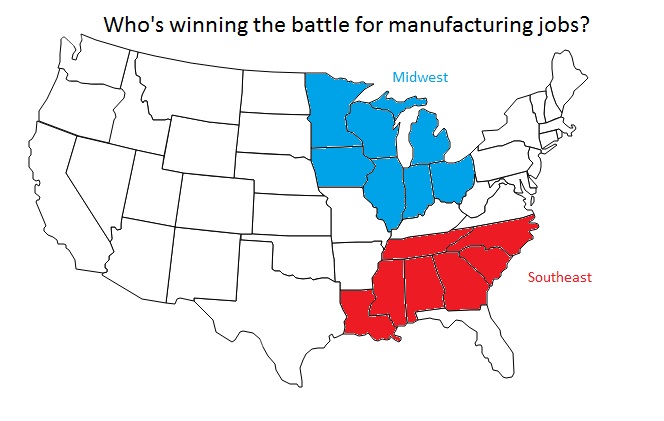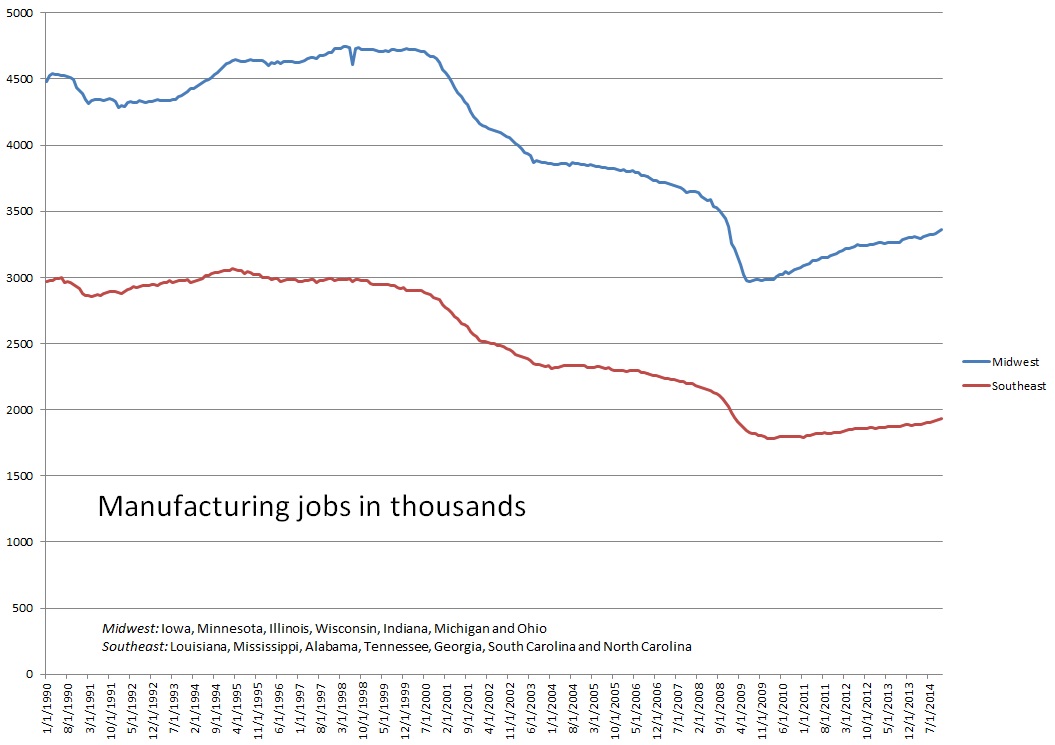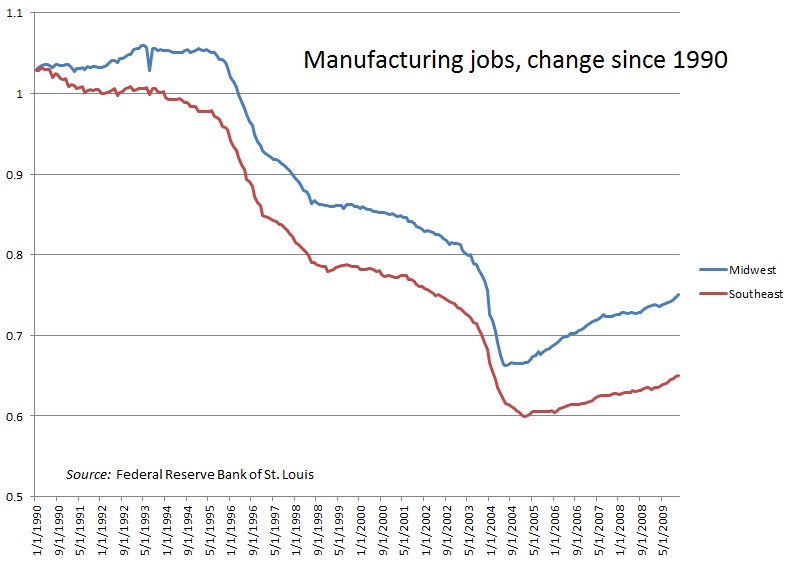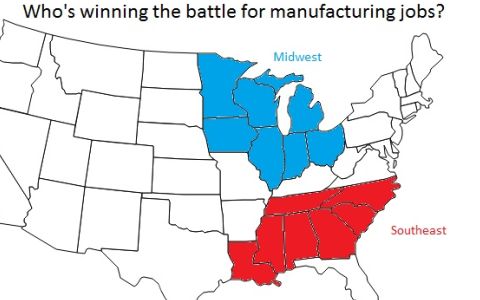If you read much, you’d be tempted to believe that the Southeast is getting all the manufacturing jobs these days, and that the Midwest and the North in general are losing out.
It’s a familiar narrative — that the historic factory prowess of former Union states is rusting away and being supplanted by a new factory belt in the South.

The anecdotes keep coming. Polaris, the first snowmobile firm ever, and founded in northwest Minnesota, is opening a big ATV plant near Huntsville, Ala. Mercedes USA is moving its headquarters to Atlanta – from New Jersey. BMW is in Spartanburg, S.C. Volkswagen is in Chattanooga, Tenn. The list goes on.
Meanwhile, Detroit is limping out of bankruptcy and Michigan and Illinois are muddling along economically. Ohio and Wisconsin aren’t dynamos right now either.
Heck, the New York Times even published something this fall about how the Midwest is losing all its good football players. “It is no coincidence that the Big Ten had postwar glory years, when the Midwest thrived on the back of the auto industry,” wrote Marc Tracy. “The Rust Belt and the decline of Big Ten football are not unrelated.”
Well, Ohio State challenged the narrative of a permanently declining Big Ten by beating Alabama in the Sugar Bowl, and it turns out, when you look at the numbers on manufacturing jobs, they show that the Midwest is outperforming the Southeast, by a pretty healthy margin.

This was a surprise to me. In the past five years, the Midwest (Iowa, Minnesota, Illinois, Wisconsin, Indiana, Michigan and Ohio) has outpaced the Southeast (Louisiana, Mississippi, Alabama, Tennessee, Georgia, South Carolina and North Carolina), and has even widened the gap between the two regions when it comes to manufacturing jobs.
Hold on, you might say. Sure, the Midwest has done better than the Southeast in the past five years, but that’s a small sample, and the Rust Belt has been rusting harder than the South for a long time.
You’d be wrong.
This chart shows the change in manufacturing employment over the past 25 years for both regions. I made the starting point in 1990 into 1 for both regions and then charted where the line went for both. Again, both have seen a negative trend since 1990, but the Midwest hasn’t lost as much ground (relative to itself) as the South.

These charts don’t say anything about wages, or the quality of jobs, but they do show that the narrative of a rising manufacturing sector in the South and a declining one in the Midwest is not exactly correct.
-startribune.com



